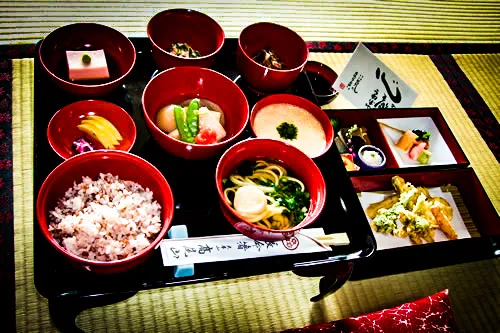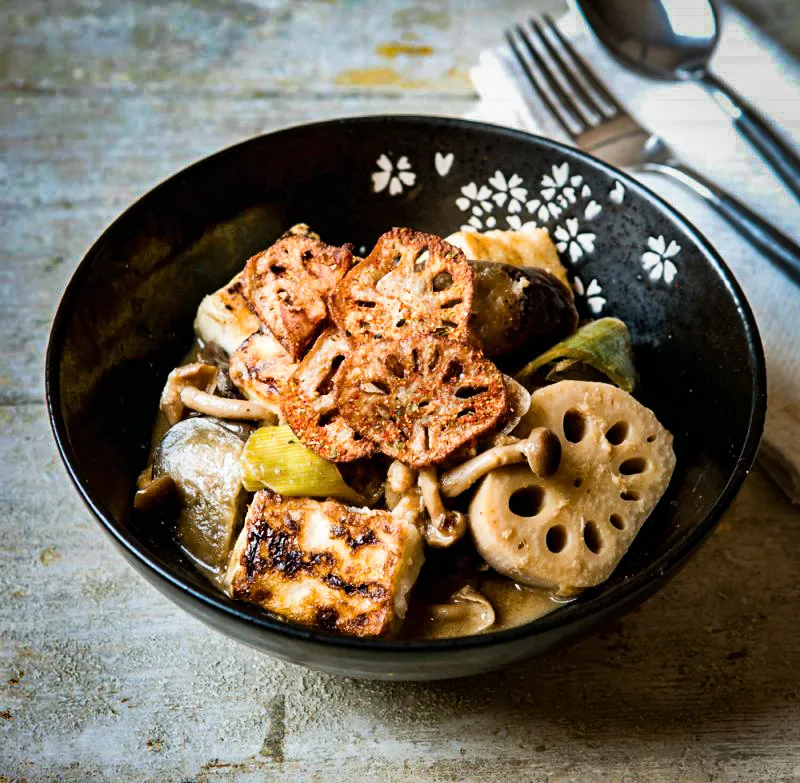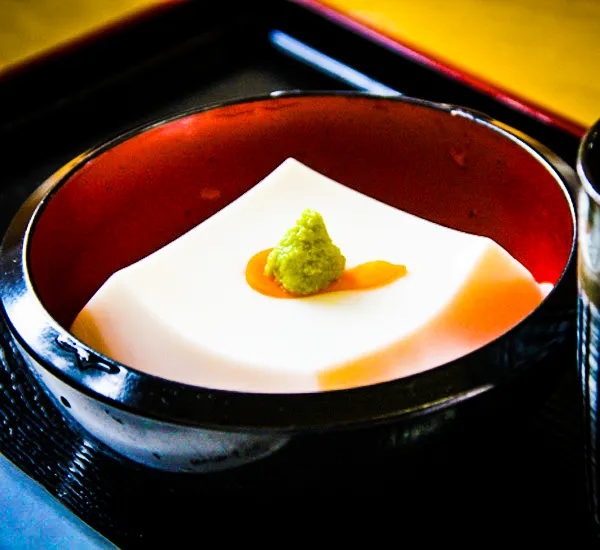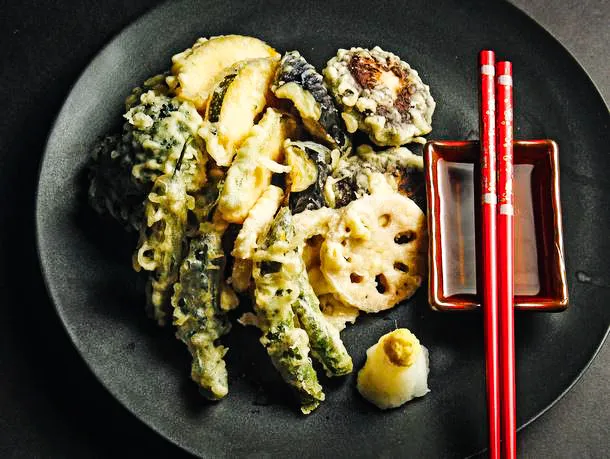Hey #Steemit community!!
The @backpackingchef here!
Today I want to tell you all about Shojin Ryori, a Japanese dish, eaten daily by Buddhist monks. The first time I tried it was in Kōyasan, while living with the monks. You can hear all about my experience with the monk way of life on my last post here: @backpackingchef/living-with-the-monks-of-k-yasan-kobo-daishi-s-eternal-meditation

Shojin Ryori
Shojin Ryori, is something everyone should try at some point. It really is an intricate part of Buddhist monks way of living. It is supposed to be well balanced just like their activities each day.
The word 'Shojin' generally means a procedure of constant reflection. In this case it is more likely that it would mean a perfection of cuisine through constant observation. 'Ryori' means cuisine.
When preparing Shojin Ryori, the monks use what they call 'the rule of five' when cooking, as the number 5 is important in Buddhist culture, in reference to the 5 elements that must be kept in perfect balance (wood, water, fire, metal, earth).

Lotus Root Soup
So every meal offers five cooking styles (raw, stewed, boiled, roasted, and steamed),
five colours (green, yellow, red, black, and white), as well as five flavours (sweet, sour, salty, bitter, and umami), which are drawn out naturally from the ingredients rather than added with additional flavourings and spices.
Shojin Ryori follows the Buddhist teachings that no life should be taken, therefor all meals are meat and fish free, most monks will also not consume garlic and onion for example, as it is a plants bulb, and kills the plant in the process.

Goma Dofu - Sesame tofu
While Shojin Ryori does not have a set recipe or even dish, the centrepiece of Shojin Ryori is always the silken sesame tofu (Goma Dofu), with grated ginger for flavour and generally a small amount of wasabi root for that extra bite.
Shojin Ryori is also accompanied by a Miso or lotus root soup in most temples, as well as seasonal, local tempura vegetables and leaves, such as lotus root, shiso, and raddish.
You will generally find something pickled and something sweet, like pickled ginger, seaweed or plum and lots of sweet fruits.

Tempura Vegetables
The whole experience of trying Shojin Ryori is something completely different, especially to western culture and is one to put on your food bucket list for certain!
Thanks @paparodin for requesting this post, I love hearing from my followers and I hope this was as informative as you wanted!
I apologise once again for not having original photos on this post. I can't find my Shojin Ryori collection, and I really wanted to publish this post. So here are my photo sources:
Shojin Ryori:http://www.takaosan.or.jp/english/img/
Lotus Root Soup: http://www.hairybikers.com/recipes/view/tofu-aubergine-and-lotus-root-stew#QS9gvE3PLIzlztHO.97
Goma Dofu: https://www.japancentre.com/en/recipes/637-sesame-tofu
Tempura Vegetables: https://www.seriouseats.com/recipes/2013/12/vegetable-tempura-from-japanese-soul-cooking.html
I hope you enjoyed this post and it was informative for you, next time you are in Japan, make sure you try some Shojin Ryori yourself, and remember to always take the time to breathe, and relax!
I'm the @backpackingchef and I'll see you next time!!
